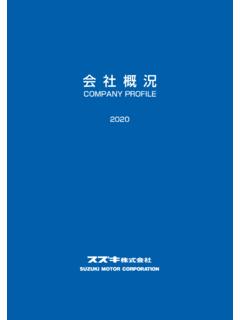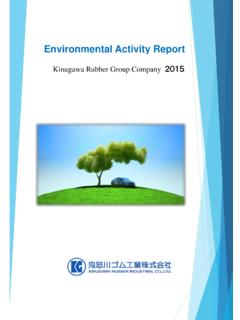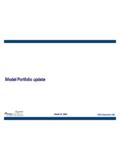Transcription of Working together for health - WHO
1 Working together for health The world health report 2006. WHO Library Cataloguing-in-Publication Data world health organization . The world health report 2006: Working together for health . 1. world health trends. 2. health personnel education. 3. Education, Medical. 4. health manpower. 5. National health programs organization and administration. 6. world health organization . I. Title. II. Title: Working together for health . ISBN 92 4 156317 6 (NLM classification: WA ). ISBN 978 92 4 156317 8. ISSN 1020-3311. world health organization 2006. All rights reserved. Publications of the world health organization can be obtained from WHO Press, world health organization , 20 Avenue Appia, 1211 Geneva 27, Switzerland (tel: +41 22 791 3264; fax: +41 22 791 4857; email: Requests for permission to reproduce or translate WHO publications whether for sale or for noncommercial distribution should be addressed to WHO Press, at the above address (fax: +41 22 791 4806.))
2 Email: The designations employed and the presentation of the material in this publication do not imply the expression of any opinion whatso- ever on the part of the world health organization concerning the legal status of any country, territory, city or area or of its authorities, or concerning the delimitation of its frontiers or boundaries. Dotted lines on maps represent approximate border lines for which there may not yet be full agreement. The mention of specific companies or of certain manufacturers' products does not imply that they are endorsed or recommended by the world health organization in preference to others of a similar nature that are not mentioned.
3 Errors and omissions excepted, the names of proprietary products are distinguished by initial capital letters. All reasonable precautions have been taken by WHO to verify the information contained in this publication. However, the published material is being distributed without warranty of any kind, either expressed or implied. The responsibility for the interpretation and use of the material lies with the reader. In no event shall the world health organization be liable for damages arising from its use. Information concerning this publication can be obtained from: world health report world health organization 1211 Geneva 27, Switzerland E-mail: Copies of this publication and the full report can be ordered from: This report was produced under the overall direction of Tim Evans (Assistant Director-General, Evidence and Information for Policy).
4 The principal authors were Lincoln Chen, David Evans, Tim Evans, Ritu Sadana, Barbara Stilwell, Phyllida Travis, Wim Van Lerberghe and Pascal Zurn, assisted by Christie Aschwanden and Joanne McManus. Organizational supervision of the report was provided by Manuel M. Dayrit and Carmen Dolea. The Managing Editor of the report was Thomson Prentice. Valuable inputs in the form of contributions, peer-review, suggestions and criticisms were received from the Director-General's Office, and from Maia Ambegaokar, Dina Balabanova, James Buchan, Gilles Dussault, Martin McKee and Barbara McPake. Significant contributions to the analytical work were received from Mario Dal Poz, Sigrid Draeger, Norbert Dreesch, Patricia Hernandez, Yohannes Kinfu, Teena Kunjumen, Hugo Mercer, Amit Prasad, Angelica Souza and Niko Speybroek.
5 Additional help and advice were kindly provided by Regional Directors and members of their staff. Other contributors were Sabine Ablefoni, Taghreed Adam, Alayne Adams, Chris Afford, Alan Leather, Fariba Aldarazi, Ghanim Al'Sheick, Ala Alwan, Sarah Barber, Kisalaya Basu, Jacques Baudouy, Robert Beaglehole, Habib Benzian, Karin Bergstrom, Isa Bogaert, Paul Bossyns, Jean-Marc Braichet, Hilary Brown, Paul Bunnell, Francisco Campos, Eleonora Cavagnero, Xuanhao Chan, Am lina Chaouachi, Ottorino Cosivi, Nadia Danon-Hersch, Khassoum Diallo, Alimata Diarra, Marjolein Dieleman, Dela Dovlo, Nathalie Drew, Sambe Duale, Steeve Ebener, Dominique Egger, JoAnne Epping-Jordan, Marthe-Sylvie Essengue, Edwige Faydi, Paulo Ferrinho, Noela Fitzgerald.
6 Martin Fletcher, Helga Fogstad, Gilles Forte, Kathy Fritsch, Michelle Funk, Charles Godue, Sandy Gove, Alexandre Griekspoor, Steffen Groth, Anil Gupta, Piya Hanvoravongchai, Hande Harmanci, Lisa Hinton, Sue Ineson, Anwar Islam, Anna Iversen, PT. Jayawickramarajah, Patrick Kadama, Hans Karle, Julia Karnaukhova, Guy Kegels, Meleckidzedeck Khayesi, Mireille Kingma, Stephen Kinoti, Etienne Krug, Yunkap Kwankam, Chandrakant Laharyia, Gaert Laleman, Jean Pierre Lokonga, Ana Lopes Tempor o, Alessandro Loretti, Pat McCarty, Judith Mandelbaum- Schmid, Annick Manuel, Bruno Marchal, Tim Martineau, Liz Mason, Zoe Matthews, Sandra McGinnis, Abdelhay Mechbal, Remo Meloni, Nata Menabde, Phillipa Mladovski, Dominic Montagu, Jean Moore, Krishnan Natarajan, Mwansa Nkwane, John Norcini, Ezekiel Nukoro, Isabelle Nuttal, Jennifer Nyoni, Cornelius Oepen, Judith Oulton, Francis Omaswa, Mary O'Neill.
7 Ariel Pablos-Mendez, Fred Peccaud, Margie Peden, Galina Perfilieva, Bob Pond, Raymond Pong, Amit Prasad, Usha Raman, Tom Ricketts, Robert Ridley, Arjanne Rietsema, Felix Rigoli, Barbara Rijks, Salif Samake, Benedetto Saraceno, Shekhar Saxena, Robert Scherpbier, Lee-Martin Shook-Pui, Kit Sinclair, Alaka Singh, Ronald Skeldon, Susan Skillman, Ajay Tandon, Tessa Tan-Torres Edejer, Linda Tawfik, Michel Thieren, Anke Tijstma, Nicole Valentine, Wim Van Damme, Dirk Van der Roost, Mark van Ommeren, Paul Verboom, Marko Vujicic, Lis Wagner, Eva Wallstam, Diane Whitney, Marijke Wijnroks, Paul Wing, Christiane Wiskow, Tana Wuliji, Jean Yan, Sandy Yule, Manfred Zahorka, Diana Zandi, and Lingling Zhang.
8 Contributors to statistical tables not already mentioned were Endre Bakka, Dorjsuren Bayarsaikhan, Ties Boerma, Eduard Bos, Thomas Buettner, Veneta Cherilova, Trevor Croft, Driss Zine Eddine Elidrissi, Anton Fric, Charu Garg, Peter Ghys, Amparo Gordillo, Eleanor Gouws, Attila Hancioglu, Kenneth Hill, Chandika Indikadahena, Mie Inoue, Gareth Jones, Joses Kirigia, Jan Klavus, Joseph Kutzin, Eduardo Levcovitz, Edilberto Loaiza, Doris Ma Fat, Fran ois Pelletier, Ravi Rannan-Elyia, Hossein Salehi, Cheryl Sawyer, Kenji Shibuya, Karen Stanecki, Rub n Su rez, Emi Suzuki, Nathalie Van de Maele, Jakob Victorin, Neff Walker, Tessa Wardlaw, Charles Waza, Jens Wilkens, John Wilmoth, and many staff in WHO country offices, governmental departments and agencies, and international institutions.
9 The report was edited by Leo Vita-Finzi, assisted by Barbara Campanini. Editorial, administrative and production support was provided by Shelagh Probst and Gary Walker, who also coordinated the photographs. Figures and tables were provided by Gael Kernen who also was responsible for the web site version, and other electronic media. Proofreading was by Marie Fitzsimmons. The index was prepared by June Morrison. Cover photo: AFP 2005. AFP 2005 and M decins Sans Fronti res: courtesy of the world Medical Association. The world Medical Association (WMA) licenses the use of selected photographs of the Caring Physicians of the world campaign, sponsored by the Pfizer Medical Humanities Initiative.
10 The material is taken from Caring physicians of the world (WMA web site ). Design: Reda Sadki Layout: Steve Ewart and Reda Sadki Figures: Christophe Grangier Printing coordination: Rapha l Crettaz Printed in France iii contents Message from the Director-General xiii Overview xv Why the workforce is important xv Picture of the global workforce xvi Driving forces: past and future xvii Strategies: Working lifespan of entry workforce exit xx Entry: preparing the workforce xx Workforce: enhancing performance xxii Exit: managing migration and attrition xxii Moving forward together xxiii An imperative for action xxiii National leadership xxiii Global solidarity xxiv Plan of action xxv Moving forward together xxvi Chapter 1.

















